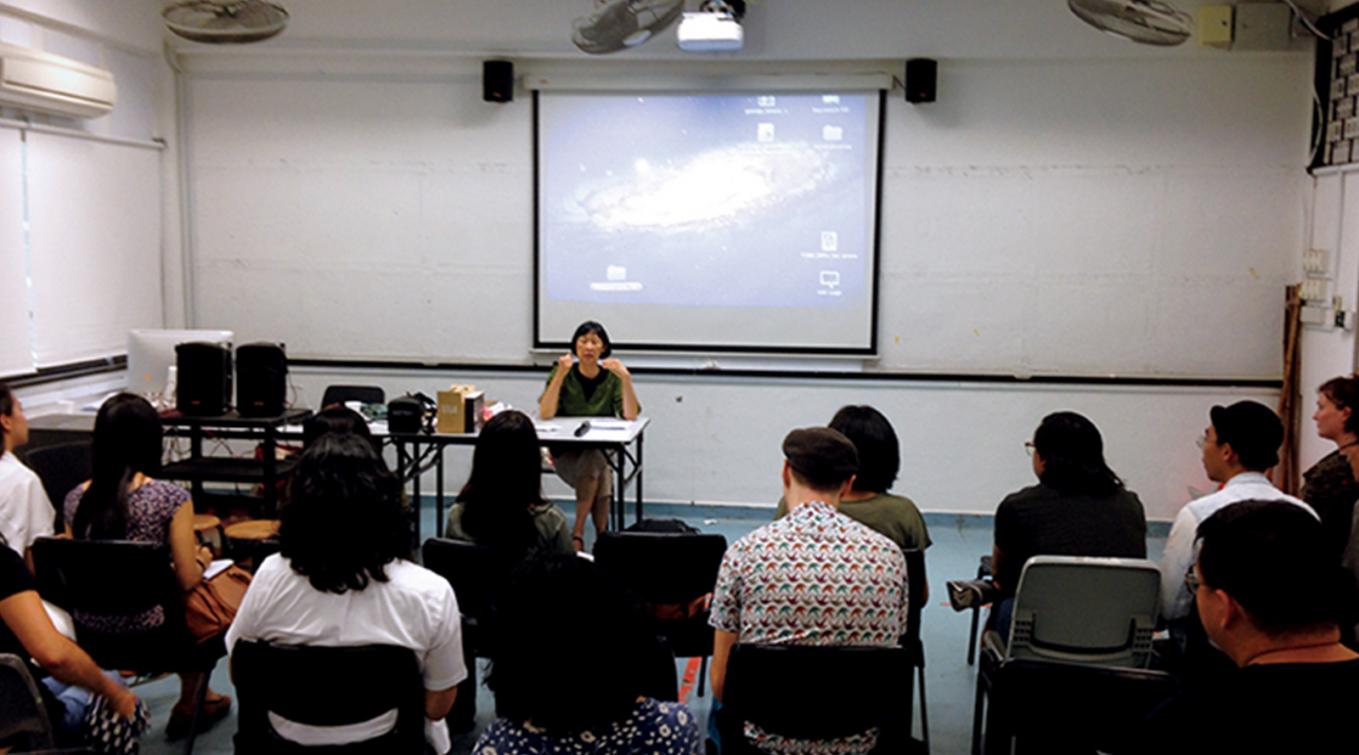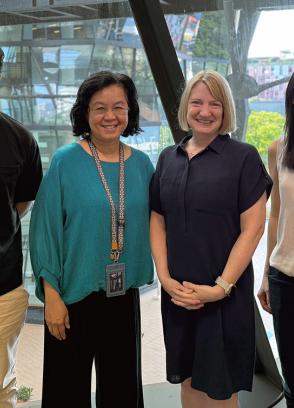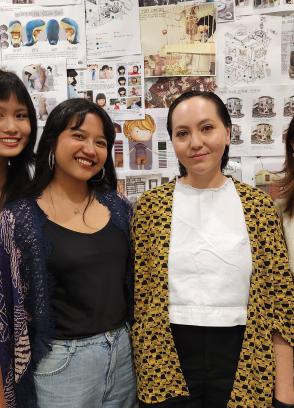Toy Pianist and Cultural Medallion recipient
“Every activity requires some creative input and this understanding is only possible if we continue till the end regardless of the nature of the action.”
A single woman dominated the stage with her presence. Margaret Leng Tan was the sole performer and her repertoire comprises only a bare set of instruments. Her instruments were her actors, characters and puppets; while she took on the role as their conductor and musician. Each piece was carefully crafted to elicit a particular response from the audience. She created unique scores using nothing more than sound.
Tan’s performance, Cabinet of Curiosities, transcended our conventional understanding of sound and music, creating active characters and story lines, using toy pianos, whistles, children’s toys and masks, leading her audience to appreciate every sound they hear as a possible source of music. It was a privilege to be her audience for a unique artistic experience and it was an even greater privilege to be given an opportunity to attend her workshop.
Tan met John Cage in 1981. She was trained in classical music but had desired to look for something more in sound. “I like to joke about this: I’m the first woman to graduate with a doctorate from Juilliard. And now, I play the toy piano!” she said.
After graduating, she was not content with simply playing a composed piece on the piano, she wanted to create art with her music and to be free to interpret music beyond the score sheets of classicalism. Under John Cage’s mentorship, she grew to be an artistic performer quite unlike any other. She became the interpreter and muse for his pieces. John Cage himself was an unconventional musician, known for using found objects and household items to create music. He did not believe in the discrimination of sound, but rather in the incorporation of it into known music, an underlying conviction that Margaret herself has carried forward to create her own pieces.
She became known to be one of the most convincing interpreters of his work and we were privileged to have her share her vast understanding of music with us. She explained that within our auditory strata, silence is the greatest illusion. Silence is simply the sound we ignore and dismiss. Hence, the first and the last lesson we learned, a lesson that we are to continue learning throughout our artistic interactions with sound, is to listen.
Musical instruments are not the only things capable of making music. John Cage and Tan have creatively included everyday objects in music, which today is the reason we have so many new genres of music that see the potential of sounds, including Death Metal and Dub Step.
Among John Cage’s musical pieces is the famous 4’33”. The performer stands on stage and does absolutely nothing, makes not a sound. In such an atmosphere, the silence is heightened and carefully observed by the audience. In this way, the sounds we ignore are brought to the forefront of the performance. We learn that there is no silence, such as we have grown to understand it. Before, the anticipation of music detracts people from the silence in order to listen to the sounds that are constantly around them.
On the first day of the workshop, we were given a rather interesting piece of homework. We were given the opportunity to engage in Cage’s pieces, by interpreting either one of two Cage’s performative pieces. The two pieces were 49 Waltzes (adapted for the Singaporean setting), and 0’00”.
49 Waltzes was originally a public performance piece to be filmed in the different states of America. It was adapted for the Singaporean student. A performance was to be enacted by students in any part of the city. The piece is meant to be performed in the locality in which it is created. This gives us a fresh perspective on the possibilities and identities of each locality. Each person had a different way of interpreting the performance, from recording the sounds of the street below, to videos detailing a simple journey home; as such, each performance was unique and helped redefine spaces in Singapore.
0’00” is a performance which John Cage created to be interpreted at the discretion of the performer. However, they had to follow certain conditions.
When John Cage first performed the piece, there was only a single instruction: “In a situation provided with maximum amplification, perform a disciplined action.” After his performance, however, he added a few more guidelines for future interpreters to follow:
“The performer should allow any interruptions of the action. The action should fulfil an obligation to others. The same action should not be used in more than one performance and should not be the performance of a musical composition.”
Each student went about performing in different ways. From classmates pouring drinks and others blowing balloons, each action led to an element of heightened sound, with a microphone to amplify the volume.
We also received the opportunity to read and understand John Cage’s essay, Lecture on Nothing. The title is quite befitting, as it is quite literally a lecture on nothing at all. In it, he rambles about Kansas and New York, and the simplicity of Kansas in comparison to life in New York. He peppers it with a repetition of the phrases, “More and more I have this feeling that we are getting nowhere. Slowly as the talk goes on, we are getting nowhere and that is a pleasure, it is not irritating to be where one is, it is only irritating to think one would like to be somewhere else.”
His piece is set with very definite pauses that are meant to last a particular duration of time. It is slow and floating, and the formation is carefully constructed like a piece of music. Each word is a beat to be played at the exact right time, with a particular speed and rhythm.
The piece is meant to illustrate a theory purported by Cage: “If something is boring after two minutes, try it for four. If still boring, then eight. Then sixteen. Then thirty-two. Eventually one discovers that it is not boring at all.” It was not a piece that is meant to be stimulating, however, once the reading was completed, we could not deny that it ignited the creative spark in every one of us. Every activity requires some creative input and this understanding is only possible if we continue till the end regardless of the nature of the action.
Although the workshop lasted only two days, the lessons remain invaluable and I believe will continue to be relevant to my artistic practice. In the complex art stratum, sound, performance and visual, all play a vital role; from the activities, we realise that it is important to build up our sensitivities in both auditory as well as the visual dimensions, to understand the senses more completely so as to enable us to know how to evoke better connections with our audience.
Listening is a continuous process that should be constantly developed. It is an important lesson that is helpful for musicians, artists, writers and poets alike: The power to appreciate the beauty of all our senses.




